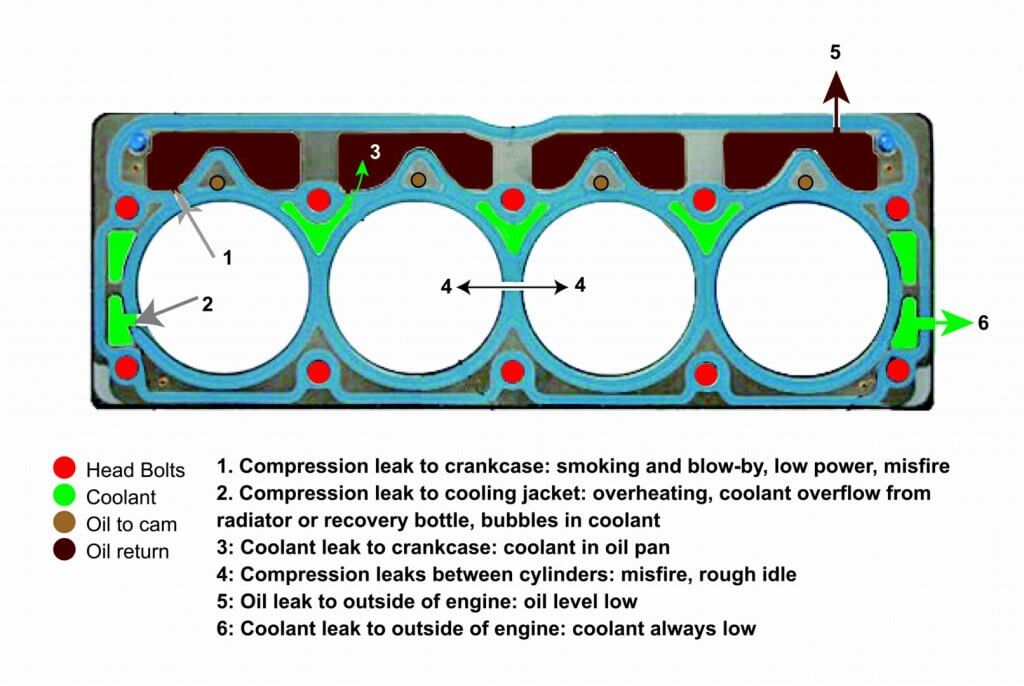Blown Head Gasket Symptoms
What are blown head gasket symptoms
Head gaskets can fail for many reasons; warped cylinder head from engine overheating, crack in the cylinder head, gasket degradation due to coolant neglect, prolonged periods of detonation, engine misfires, and over-boost on turbo equipped engines. There are several methods to diagnose a blown head gasket and I’ll detail them here. I’ll also discuss head gasket replacement costs and head gasket sealers. First, let’s discuss the symptoms of a failed head gasket
Symptoms of blown head gasket
• White smoke coming from the exhaust indicating a gasket breach between the cylinder and the cooling passage
• Coolant in the oil indicating a gasket breach between a cooling passage and an oil passage.
• Milky brown coolant color, almost like a milkshake.
• Oil in the radiator and coolant reservoir indicating a gasket breach between an oil passage and a cooling passage or a cylinder and oil passage
• Over pressurization and rapid engine overheating. This is an indication of a gasket breach between the cylinder and coolant passage where combustion gasses are pushed into the cooling system. This causes bubbling in the coolant reservoir and causes the radiator hoses to become hard and coolant to vent from the reservoir
• Overheating indicating that hot combustion gasses from the breached head gasket are superheating the coolant

Typical head gasket
Before jumping to the conclusion that your engine has a blown head gasket, ask yourself these questions:
Does your engine have a turbocharger and oil cooler?
Because modern turbochargers run at up to 300,000 RPM and are in constant contact with hot exhaust, car makers circulate coolant around the bearings. In addition to coolant, the bearings are lubricated with engine oil. If the seals fail, coolant can enter the combustion chamber, where it burns and creates white smoke in the exhaust.
Turbocharged engines also have an oil cooler to remove the high heat. The engine oil cooler receives coolant from the radiator and circulates the coolant around an oil cooler. If you’ve neglected coolant maintenance, the oil cooler can corrode and coolant can enter the oil and vice versa.
Does your vehicle have an automatic transmission?
Automatic transmissions generate a lot of heat and that heat gets removed by way of a transmission cooler located inside the radiator. If you’ve neglected coolant changes, corrosion can eat through the transmission cooler resulting in transmission fluid entering the coolant and coolant entering the transmission.
Head gasket failure modes
A head gasket can fail between a coolant passage and an oil passage
The result? Coolant in the coil or oil in the coolant.
Gasket failure between the cylinder and a coolant passage
The result? Overheating and over-pressurization in the cooling system. Exhaust gas gets pumped into the cooling system
©, 2020 Rick Muscoplat
Posted on by Rick Muscoplat